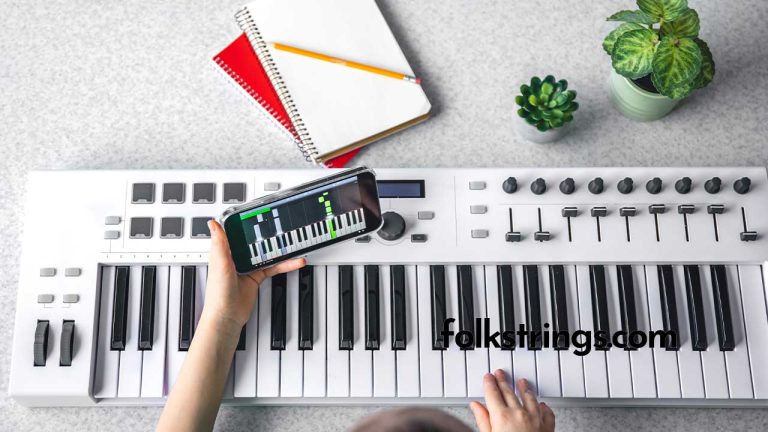What Are Some Really Hard Piano Pieces? Unveiling the Mount Everest of Keyboard Challenges!
Folkstrings.com is reader-supported. When you buy through links on our site, we may earn a small commission.
The piano, with its expansive range and expressive capabilities, has always captivated both performers and listeners alike.
I’ve always been amazed by the way a skilled pianist’s fingers can dance across the keys, turning what could be an intimidating wall of black and white into beautiful music.
Among the vast repertory of piano music, some pieces are particularly renowned for their difficulty.
These pieces not only stretch the technical and emotional boundaries of the players but also serve as benchmarks for the mastery of the instrument.
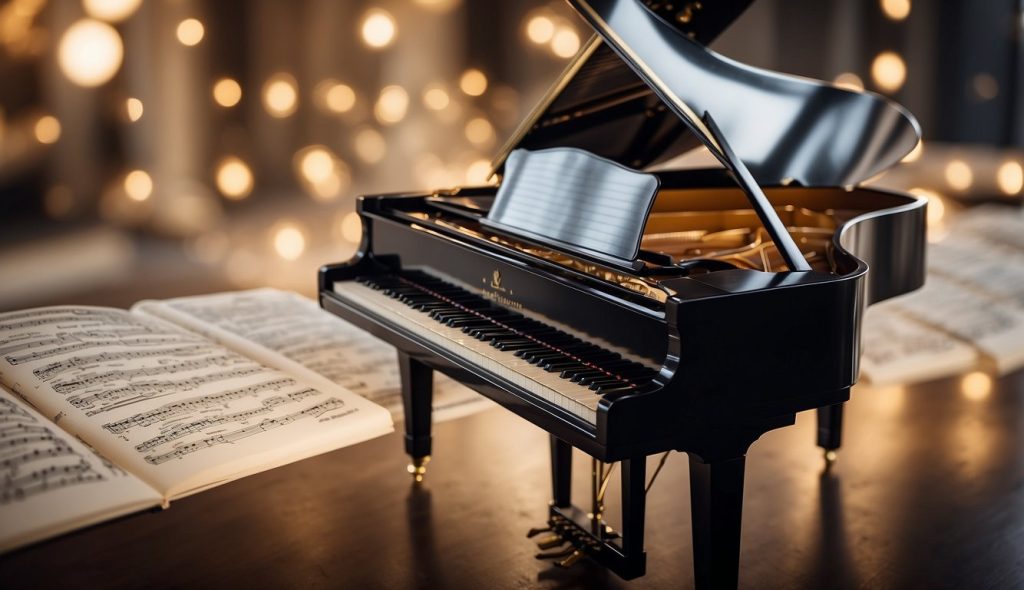
Along my musical journey, I’ve discovered works by legendary composers that are notorious for their complexity and the sheer physical demands they place on performers.
These compositions can be seen as towering technical mountains to climb — a challenge that pianists often undertake with a mix of dread and excitement. The cultural impact of these rigorous pieces cannot be overstated as they shape both the pianist’s craft and the audience’s understanding of what is possible on the instrument.
Key Takeaways
- Some piano pieces are celebrated for their formidable difficulty and serve as milestones for pianists.
- The most challenging works push the boundaries of technical skill and emotional expression.
- Difficult piano repertoire has profoundly influenced cultural perceptions of the instrument’s potential.
Legendary Composers and Their Masterpieces
I’ve always found that the most challenging piano pieces serve as a testament to the brilliance and innovation of their composers. These works demand a combination of technical proficiency and deep musical expression, often pushing the boundaries of what’s possible on the instrument.
Beethoven’s Complex Creations
Ludwig van Beethoven is renowned for his profound impact on the piano repertoire. Among his most demanding works is the Hammerklavier Sonata (Op. 106). This piece is notorious for its technical and emotional depth, offering a mammoth challenge for even the most accomplished pianists.
The Daunting Works of Franz Liszt
Franz Liszt took virtuosity to new heights. His Grandes Études de Paganini, especially the “La Campanella”, requires a pianist to display extraordinary dexterity and endurance. The technical challenges are matched by the need for expressive playing, making Liszt’s pieces a significant hurdle to master.
The Rhythmic Challenges of Maurice Ravel
Maurice Ravel infused his compositions with intricate rhythms and textures. Works like “Gaspard de la Nuit” are as hauntingly beautiful as they are difficult. The precise fingerwork and complex coordination make Ravel’s music a daring adventure for the pianist.
Innovative Difficulty in Chopin’s Compositions
Frédéric Chopin is beloved for his poetic expressiveness mingled with technical innovation. Pieces like the Études and ballades demand a wide palette of pianistic skills, from feather-light touch to robust, spirited attacks, combining lyrical beauty with fiendish technical passages.
Technical Mountains to Climb
Conquering the most challenging piano pieces requires a unique blend of speed, stamina, and precision. I’ll take you through the thrilling landscapes of extreme piano difficulties.
Extreme Speed and Agility
When I tackle pieces demanding extreme speed and agility, my fingers must dash across the keys with precision.
Works like Balakirev’s Islamey and Liszt’s La Campanella challenge me with lightning-quick arpeggios and trills that test the limits of my dexterity.
- Islamey by Balakirev: Known for its rapid passages and demanding jumps.
- La Campanella by Liszt: Features intricate trills and high-speed note sequences.
Marathon Pieces Testing Stamina
Sometimes, the endurance to maintain consistent quality over a long time can be just as demanding.
I’ve spent countless hours building my stamina to play marathon pieces like Schubert’s Wanderer Fantasy or Ravel’s Gaspard de la Nuit, where the intensity doesn’t wane from beginning to end.
- Wanderer Fantasy by Schubert: A test of prolonged focus and energy.
- Gaspard de la Nuit by Ravel: Requires sustained precision and control.
Polyrhythms and Complex Dynamics
The coordination to master polyrhythms and complex dynamics is key for pieces like Chopin’s Ballades or the syncopated rhythms of Stravinsky’s Petrushka.
Managing the distinct dynamics and chordal passages while keeping inconsistent time signatures or rhythms straight is a significant part of my practice routine.
- Chopin’s Ballades: They blend beautiful melodies with intricate polyrhythms.
- Petrushka by Stravinsky: Features unpredictable rhythms and demanding technical sections.
Infamous Piano Works by Lesser-Known Composers
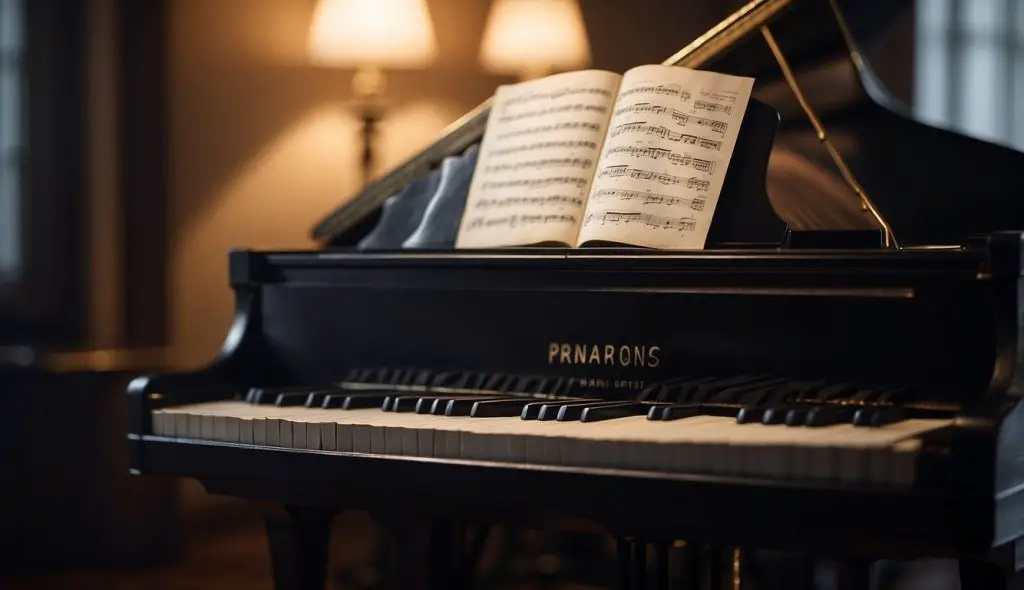
Some pieces push the boundaries of traditional piano playing to an extreme, requiring exceptional technical skill and emotional investment. Let me tell you about a few standout works by composers who, despite their lesser fame, have made a lasting impact on the piano repertoire due to their formidable compositions.
Sorabji’s Opus Clavicembalisticum
One of the most daunting pieces I’ve come across is Kaikhosru Shapurji Sorabji’s Opus Clavicembalisticum. With its overwhelming length, spanning over four hours for a complete performance, Opus Clavicembalisticum is a test of endurance and complexity. Sorabji is notorious for creating works that venture far beyond what is normally expected of pianists, both technically and emotionally.
Alkan’s Fearsome Compositions
Charles-Valentin Alkan is another composer who wrote extremely challenging music from where the composition Le Preux stands out. Alkan’s Le Preux translates to “The Brave One”, and brave indeed is any pianist tackling this piece. His works are riddled with a creative yet fear-inducing complexity, often evoking a sense of awe and trepidation.
The Pioneering Pieces of György Ligeti
Finally, there’s György Ligeti, a Hungarian composer whose avant-garde works opened a new realm for piano music. One of the most talked-about pieces is “The Devil’s Staircase”, the fourth Étude from Book Two. Ligeti’s etudes are fascinating; they fuse formidable technical challenges with innovative harmonics and intricate rhythms, truly a hallmark of avant-garde style.
The Physical Demands of Piano Performance
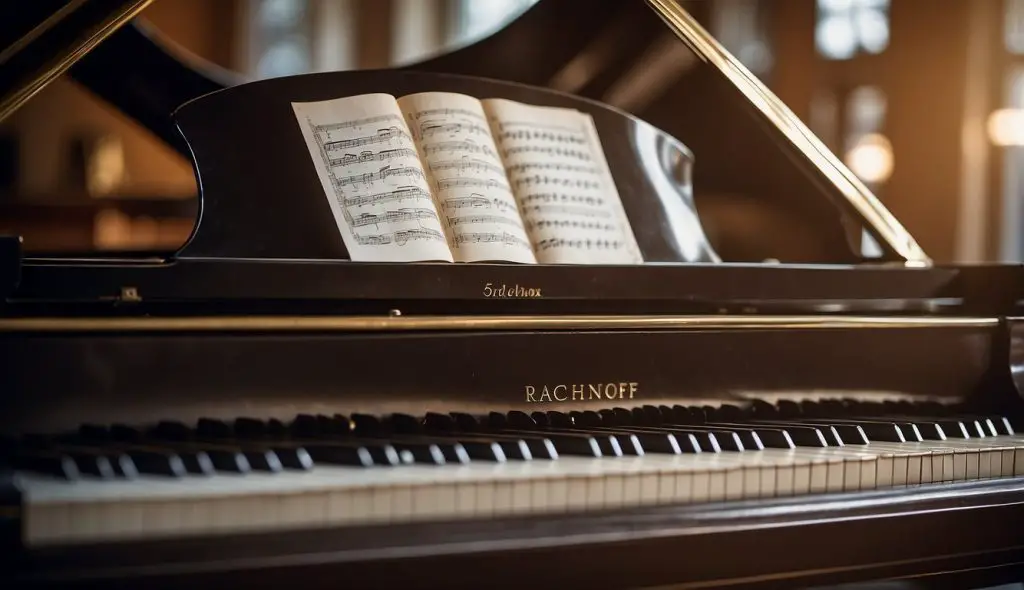
The execution of complex classical piano pieces often poses significant challenges, particularly in terms of manual dexterity and the ability to interpret diverse musical structures.
Challenges for the Left Hand
The left hand in piano performance has to often undertake arduous passages that demand both strength and subtlety. In many classical repertoire pieces, my left hand must deliver robust bass lines and intricate counterpoints, vital for the piece’s harmonic foundation.
For example, some etudes for piano, like those of Chopin or Liszt, include left-hand jumps and rapid arpeggios that require meticulous coordination and control.
Moreover, certain difficult piano pieces demand the left hand to perform almost as independently as the right. To gain this level of independence and dexterity, I’ve discovered that practicing specific sheet music, such as Rachmaninoff’s Piano Concerto No. 3, can significantly improve my left-hand agility and strength over time.
Navigating Diverse Time Signatures
A diverse range of time signatures is another aspect that heightens the physical demands of performing challenging piano pieces.
My ability to smoothly navigate through uncommon and frequently changing time signatures is crucial when tackling complex classical pieces.
Sheets of music with time signature variations challenge me to maintain rhythmic accuracy and sensitivity to the musical phrasing.
Oftentimes, the irregular groupings in compositions by composers like Stravinsky or Ravel require that I invest considerable time in counting and body movement to internalize the rhythm.
Pieces containing alternating time signatures, for example, stretching across bars of 5/4, 7/8, or even 13/16, necessitate a heightened sense of pulse and internal timing to execute impeccably.
The Cultural Impact of Difficult Piano Pieces

In my experience, difficult piano pieces have resonated deeply within various cultural contexts, often pushing boundaries and setting new standards of excellence in the world of classical music.
Summoning the Romantic and Dramatic
The most challenging piano music often derives from the Romantic period, where composers like Franz Liszt and Frederic Chopin sought to evoke intense emotions through their compositions.
Liszt’s ‘Transcendental Études’, for example, are not only technically demanding but they encapsulate the drama and passion inherent to Romanticism.
These pieces demand a formidable combination of virtuosity and expressiveness, traits that resonate with both pianists and audiences, continually inspiring both aspiring musicians and seasoned professionals.
The Ballet Roots of Stravinsky’s Works
Igor Stravinsky, a notable Russian composer, embedded complex rhythms and dissonant harmonies in his work.
‘Petrushka’, originally a ballet, has been adapted for the piano and is known for its vivid storytelling and technical challenges. Its connection to ballet means that the piece isn’t solely a display of pianistic prowess but also pays homage to its roots in dance, including the nuanced emotions and narratives from the ballet stage.
Piano Competitions and Prodigies
Piano competitions have often been platforms showcasing interpretations of the most demanding pieces in the repertoire.
Works by composers like Sergei Rachmaninoff and Prokofiev feature prominently in these contests due to their difficulty and depth.
These competitions are more than trials of skill; they’re celebrations of the cultural heritage of classical music. Young pianists especially use these platforms as launching pads for their careers, often highlighting their technical abilities and interpretive insights with works that have defined and shaped piano culture. Classic examples include Rachmaninoff’s Piano Concerto No. 3 and Prokofiev’s Piano Sonata No. 7.
These pieces and the contexts in which they’re performed not only test a pianist’s mettle but also act as mediums of inspiration and cultural expression, affecting both players and listeners profoundly.
Frequently Asked Questions
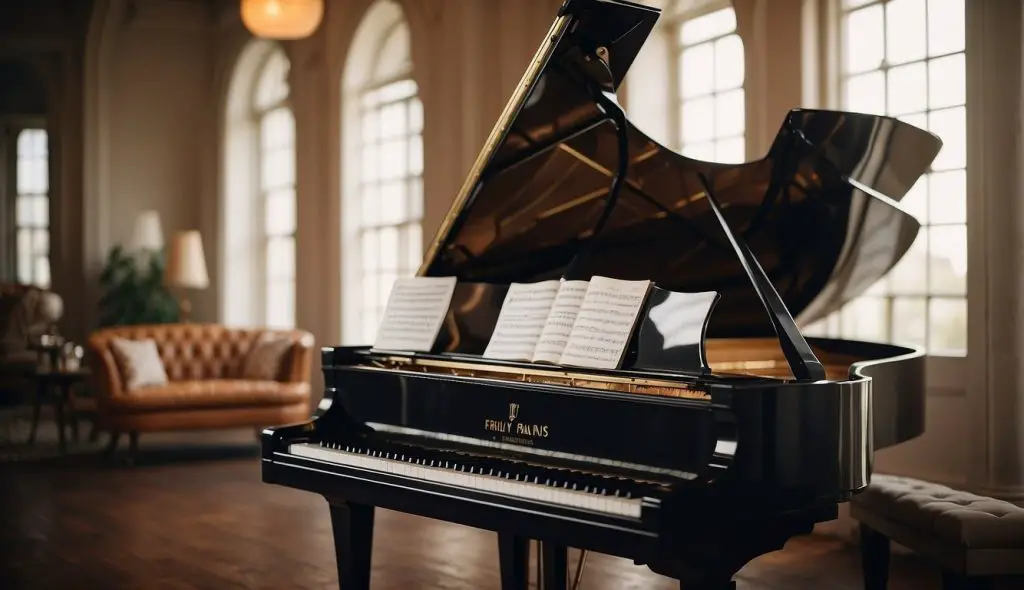
In this section, I’ll address some common curiosities regarding piano pieces that are widely recognized for their complexity and technical demands.
From classical to modern compositions, these questions cover the pieces that represent the pinnacle of pianistic challenges.
Which classical piano compositions are considered the most challenging to perform?
In the realm of classical music, Franz Liszt’s La Campanella and Transcendental Études, specifically Mazeppa, are often cited for their extreme demands on technique and expression.
Igor Stravinsky’s Trois mouvements de Petrouchka also poses a considerable challenge due to its intricate rhythms and technical demands.
What are some of the impressively difficult modern pieces for piano?
Modern piano pieces such as György Ligeti’s Études and Pierre Boulez’s Second Sonata push the boundaries with their complex structures and advanced techniques.
These pieces require a pianist to possess not only technical skill but also a deep understanding of the compositional language.
Which piano sonatas are renowned for their high difficulty level?
Among the pantheon of piano sonatas, Ludwig van Beethoven’s Hammerklavier Sonata, Op. 106, stands out for its technical and emotional depth.
Similarly, Sergei Prokofiev’s Piano Sonata No. 6 in A major, Op. 82, challenges performers with its brisk tempos and demanding passages.
Could you list a few piano pieces that are notorious for their technical demands?
Pieces like Sergei Rachmaninoff’s Prelude in G minor, Op. 23, No. 5, and Maurice Ravel’s Gaspard de la Nuit are notorious for their technical demands, requiring outstanding dexterity and stamina from the pianist.
What compositions by composers like Beethoven and Rachmaninoff are known to be particularly tough for pianists?
Beethoven’s Waldstein Sonata, Op. 53, and Rachmaninoff’s Piano Concerto No. 3 in D minor, Op. 30, are legendary for their difficulty.
These compositions demand virtuosic skill and profound musicality, making them intimidating challenges for even seasoned pianists.
What makes a piano piece be generally regarded as ‘the hardest’?
A piano piece is often regarded as ‘the hardest’ due to a combination of fast octaves, complex rhythms, quick finger-work, and the emotional depth required to convey the composer’s intent.
These aspects culminate in pieces like Charles-Valentin Alkan’s Concerto for Solo Piano, Op. 39, which push the performer’s abilities to the limits.
Author Profile
-
Daniel Johnstone is an English writer with a love for stringed instruments from around the world.
He shares his love for these instruments through his writing for folkstrings.com, a website dedicated to all things related to folk string music.
Daniel's passion for music started at a young age, and he has since become an accomplished musician, playing guitar, cavaco, and recently, the harp.
His dedication to learning and sharing his knowledge of stringed instruments is evident in his insightful and engaging blog posts. Whether you're a seasoned musician or a beginner, Daniel's writing is sure to inspire and entertain you.
When he's not playing music or writing, you can find Daniel exploring new instruments and seeking out new sounds to share with his readers.
Latest entries
 AutoharpApril 4, 2024What Is the Autoharp Made Of: Exploring Its Materials and Craftsmanship
AutoharpApril 4, 2024What Is the Autoharp Made Of: Exploring Its Materials and Craftsmanship AutoharpApril 4, 2024Is Autoharp Easy to Play? Unveiling the Truth for Beginners
AutoharpApril 4, 2024Is Autoharp Easy to Play? Unveiling the Truth for Beginners AutoharpApril 4, 2024What Is an Autoharp Worth? Your Guide to Pricing and Value
AutoharpApril 4, 2024What Is an Autoharp Worth? Your Guide to Pricing and Value AutoharpApril 4, 2024Are Autoharp and Zither the Same Thing? Unraveling String Instrument Myths
AutoharpApril 4, 2024Are Autoharp and Zither the Same Thing? Unraveling String Instrument Myths
Affiliates:
This post may contain affiliate links that at no additional cost to you, the site may earn a small commission. We only recommend products we would use ourselves and all opinions expressed on this site are our own.
Accuracy Advice:
While we strive to provide up-to-date and accurate information, the content in this article may not reflect the most current research or medical guidelines. We encourage readers to do further research and consult with professionals for more personalized advice.
Our Recommendations:
The products and services mentioned in any of our articles are recommended based on our independent research and personal experience. We are not sponsored by any company. We aim to suggest products and services we believe are of high quality and could be beneficial to our readers.


